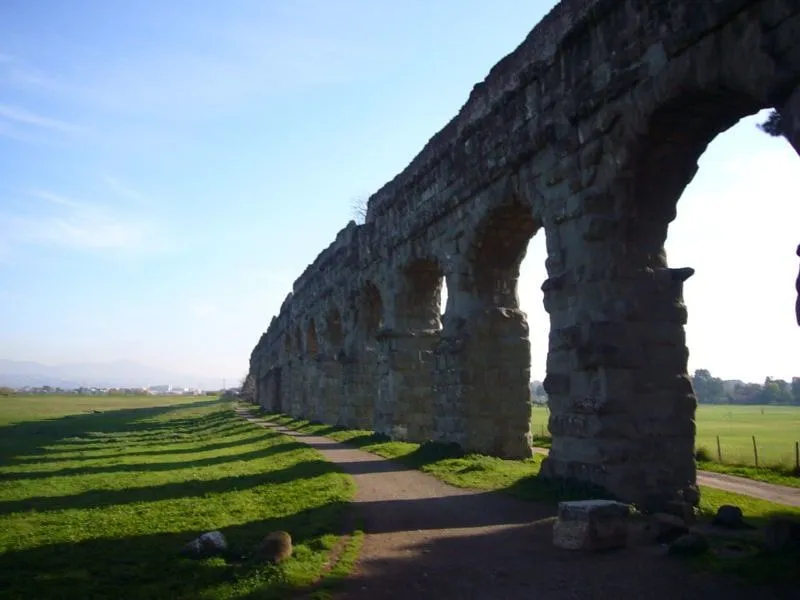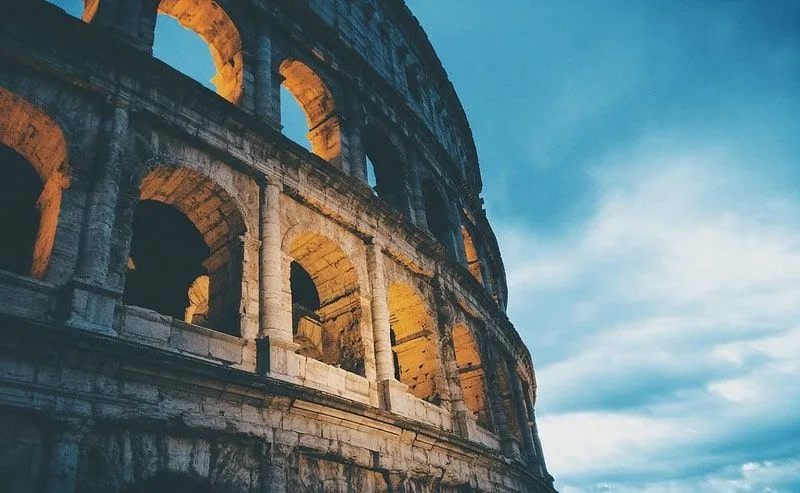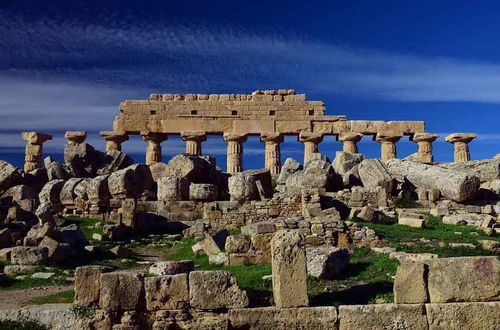FOR AGES 7 YEARS TO 11 YEARS
Image © Pikwizard.
The Romans lived thousands of years ago, and in some ways, they were one of the world's most advanced civilisations ever. They lived in the middle of Italy, and also conquered many other areas which became part of the Roman Empire.
Ancient Rome was also a fascinating place, where many amazing inventions were created, including many inventions that we still use today. KS2 kids learning about the Romans in history at school will love learning all about the helpful creations that the Romans invented. This guide will help parents to support their child's education at KS2.
Take a look at this educational and fun guide to help your child discover all about ancient Roman inventions.
The Romans created a regular and systematic road network, which had never been seen before, though some individual pathways had existed before. The first Roman road was created in 312 BCE, by an official called Appius Claudius Caecus in Italy. Roman roads were the first ever built in Britain. Many, such as Fosse Way, the oldest Roman road in Britain, are still in use today. A typical Roman road was straight and built from concrete, with a drainage system surrounding it.
These highways were important because they meant that soldiers could travel quickly, and that messages and goods could be delivered more efficiently throughout the enormous Roman Empire, which stretched from North Africa to Britain. Most roads were built by Roman soldiers. Throughout the Roman Empire, the ancient Romans built 50,000 miles of road, which were mostly used by soldiers and merchants, travelling by foot or chariot.

Image © Wikimedia Commons
Aqueducts are another invention developed by the Romans, and are systems of pipes that transport water from natural sources to cities, for drinking and washing purposes. A huge aqueduct system was built within the Roman Empire from around 312 BCE to 226 CE. The first Roman aqueduct was called the Aqua Appia, and it was built by Appius Claudius Caecus, the official who also built Rome's first road!
Did You Know: Impressive arches were often used by the Romans when constructing an aqueduct. Arches allowed water in pipes to be transported overseas.
The Romans also advanced the sewer system in Rome, which was originally built by the Etruscans in around 500 BCE. The main purpose of Roman sewers was to remove excess water from the streets, rather than for hygiene purposes. One of the earliest and largest sewer systems in the Roman Empire was called the Cloaca Maxima, which carried wastewater from Rome's latrines and baths into the River Tiber in Italy. It was built by the Roman King Tarquinius Priscus in 600 BCE.

Image © Unsplash
The Romans were the first people to combine limestone rock, water and volcanic rock and sand to form concrete; a hard substance that we still use in buildings. This was developed in the 3rd century CE by Roman builders. Though similar materials had been used previously, the volcanic rock the Romans used made their concrete especially useful, because it prevented it from cracking. The Romans were the first people to popularise concrete as a building material. It was used by the Romans to build many different things, including harbours, terraces and even the Colosseum.
The calendar - which we still use today - is another invention created and developed by the Romans. The first 12-month calendar was first created by the ancient Roman King Numa Pompilius, and later on Julius Caesar, a famous Roman leader, developed this into the Julian calendar in 46 BCE. This was the first calendar based on the movement of the sun rather than the moon, and consisted of 365 days. It heavily influenced the way we measure time today.
Did You Know: Julius Caesar was a Roman politician and military leader, who was a dictator of ancient Rome. He was eventually murdered by other Roman politicians, but his great-grandnephew ended up being the first Roman Emperor.
The Romans developed surgical methods and tools that we still use in modern day medicine, like the scapellus, the forerunner of the modern day scalpel. Some medical inventions are no longer used, such as the cupping vessel, which was used to allow for blood loss, which the Romans thought would restore health to people. These developments were influenced by the ancient Greeks, and took place from 460 BCE.

Image © Wikimedia Commons
The Romans first came up with the idea of underfloor heating, which is pretty cool! The first underfloor heating system was developed in ancient Rome, and it is thought to have been invented in 80BCE by a Roman inventor called Sergius Orata. The Roman heating system was called a hypocaust and used stone stacks to spread hot air. The hypocaust was often used to heat baths.
The very first newspaper available to the public was also invented by the ancient Romans. It was called the Acta Diurna, which means "daily acts" and the famous Roman general Julius Caesar was its editor. It began in 59 BCE, though prior to this, private daily notices called actae also existed for important officials. You could read all about upcoming events like gladiator games or discover political information. The Acta Diurna was posted all around Rome.
Did You Know: You could read your horoscope in the first Roman newspaper, which also had a gossip column about famous and powerful Romans!
The first bound book was invented in ancient Rome, and was widely used by the 1st century CE. This was known as a codex, which consisted of lots of pages bound together on papyrus, rather than scrolls or tablets which were previously used for reading. The inventor of the codex and when it was created remains a mystery, although some credit Julius Caesar.
Did you know that fast food was invented by the Romans? Fast food restaurants could be found on the streets of ancient Rome, and they were known as thermopolia. Thermopolia are thought to have been invented 2,000 years ago, although we do not know who first thought of the idea. Often, Romans would grab a quick snack or meal from a thermopolium, where you could find cheese dipped in honey, and garum, which was a special Roman fish sauce.

Image © Pexels
1.Kids who love creative writing could write their own article to be featured in a Roman newspaper.
2.Why not pay a visit to some Roman inventions that still stand? There are many aqueducts near Hadrian's Wall in Northumberland.
3.Your child could come up with their own illustrated thermopolium menu, using the internet to discover different Roman foods.
Read The Disclaimer
At Kidadl we pride ourselves on offering families original ideas to make the most of time spent together at home or out and about, wherever you are in the world. We strive to recommend the very best things that are suggested by our community and are things we would do ourselves - our aim is to be the trusted friend to parents.
We try our very best, but cannot guarantee perfection. We will always aim to give you accurate information at the date of publication - however, information does change, so it’s important you do your own research, double-check and make the decision that is right for your family.
Kidadl provides inspiration to entertain and educate your children. We recognise that not all activities and ideas are appropriate and suitable for all children and families or in all circumstances. Our recommended activities are based on age but these are a guide. We recommend that these ideas are used as inspiration, that ideas are undertaken with appropriate adult supervision, and that each adult uses their own discretion and knowledge of their children to consider the safety and suitability.
Kidadl cannot accept liability for the execution of these ideas, and parental supervision is advised at all times, as safety is paramount. Anyone using the information provided by Kidadl does so at their own risk and we can not accept liability if things go wrong.
Kidadl is independent and to make our service free to you the reader we are supported by advertising.
We hope you love our recommendations for products and services! What we suggest is selected independently by the Kidadl team. If you purchase using the buy now button we may earn a small commission. This does not influence our choices. Please note: prices are correct and items are available at the time the article was published.
Kidadl has a number of affiliate partners that we work with including Amazon. Please note that Kidadl is a participant in the Amazon Services LLC Associates Program, an affiliate advertising program designed to provide a means for sites to earn advertising fees by advertising and linking to amazon.
We also link to other websites, but are not responsible for their content.
Was this article helpful?



Browse Category



We’ll send you tons of inspiration to help you find a hidden gem in your local area or plan a big day out.



Check your inbox for your latest news from us. You have subscribed to:
Remember that you can always manage your preferences or unsubscribe through the link at the foot of each newsletter.